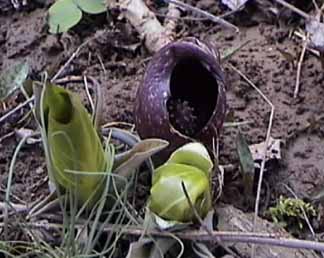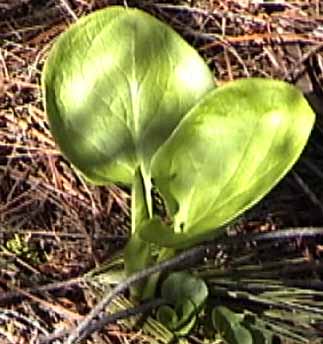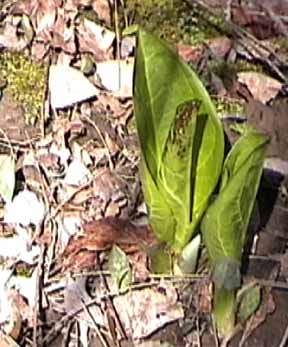Plants and People Project
Skunk Cabbage - Symplocarpus Foetidus
Also called Skunk Weed, Pole Cat Weed, Meadow Cabbage, Hermit of the Bog, and Swamp Cabbage. The root has been used to treat several illnesses. The Herbalist
This plant's roots are poisonous! Eating the leaves can cause burning.
Native Americans used the skunk cabbage for many medicinal purposes. They also used the root as an underarm deodorant. The leaves were used as a poultice to stop swelling. Peterson Field Guides Eastern/Central Medicinal Plants
"It is said to be helpful in epilepsy, and convulsions during pregnancy and labour. It is an ingredient in well-known herbal ointments and powders." Botanical.com
"A medicine made from the plant was used to treat hysteria, fits epilepsy and convulsions." Indian Herbology of North America
Skunk cabbage is one of the first plants to bloom in the spring. It is a favorite of bees. It blooms before the leaves unfold.
Black Bears eat the ripened flowers in the early spring. It helps them pass their bowels after the long winter hibernation. Oil Creek State Park Information film, Pennsylvania State Parks, Pennsylvani Cable Network, 2007.
"The spadix of the Skunk Cabbage produces enough
heat through vigorous cellular respiration in the spring to maintain a
temperature around 70 degrees F. The spathe helps maintain this by having
many air spaces in it's walls, insulating it from the outside, as well
as an opening that is designed to create a vortex inside with incoming
air currents.. The heat generated from the spadix is enough to melt the
surrounding snow and ice, making them easy to spot in a spring swamp."
LAURENTIAN
Center Plant Key
"In late Spring, the Common Yellowthroat will sometimes build its nest in the hollow of large Skunk Cabbage leaves." Study of Northern Virginia Ecology (excellent images!)
"Early Swedish settlers in Pennsylvania gave skunk cabbage the name "bear-weed," since bears were known to feast on the buds and leaves." The Nature Institute
The flowers and crushed leaves give off a skunky scent.

DISCLAIMER: These pages are presented solely as a source of INFORMATION and ENTERTAINMENT. No claims are made for the efficacy of any herb nor for any historical herbal treatment. In no way can the information provided here take the place of the standard, legal, medical practice of any country. Additionally, some of these plants are extremely toxic and should be used only by licensed professionals who have the means to process them properly into appropriate pharmaceuticals. One final note: many plants were used for a wide range of illnesses in the past. Be aware that many of the historical uses have proven to be ineffective for the problems to which they were applied.
Identification and other facts / More facts / PLANTS database
Skunk Cabbage Flower and leaf buds



Unfolding skunk cabbage leaves